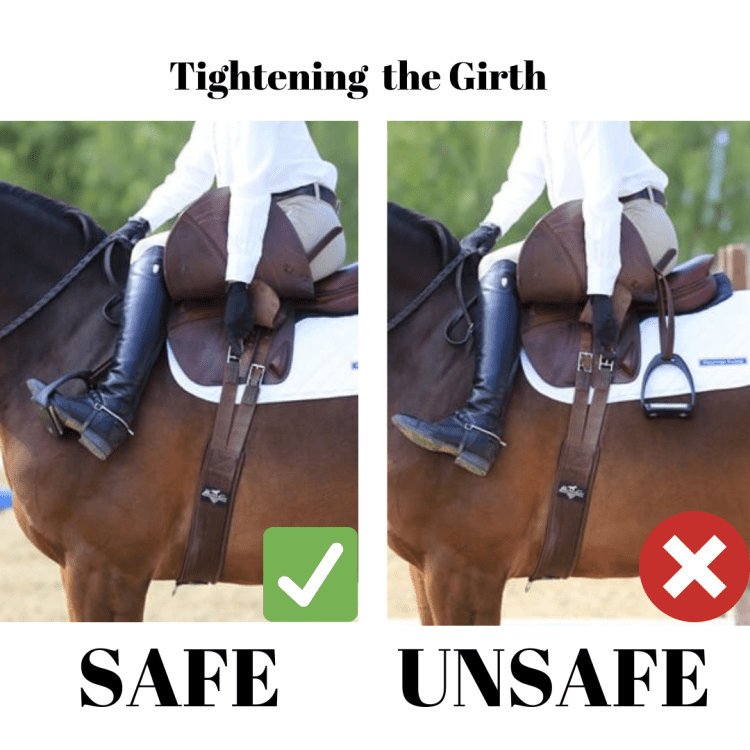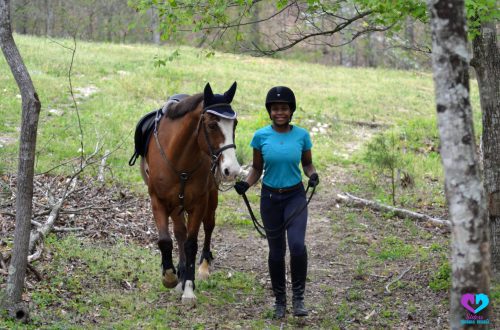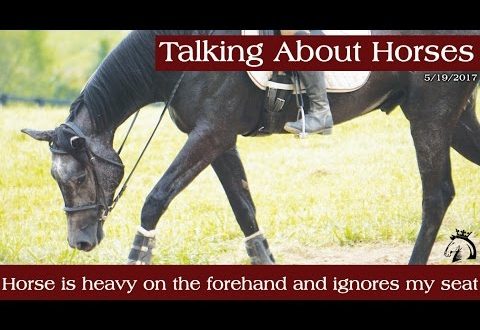
Tighten your girth? No problem!
Tighten your girth? No problem!
What should you do if your horse shows dissatisfaction every time you try to tighten the girth? Horses that are sensitive to girth and saddle tightening often respond to these manipulations by stuffing their ears, tensing up, moving around in an attempt to escape, or even showing aggression while trying to bite you or even beat you off. How can this behavior be corrected?
Most often, this behavior first appears when the horse is tightened very sharply or he experienced some discomfort when using a particular girth. He retains a conditioned fear in memory of pain he has experienced in the past. Note that a horse usually reacts to girth tightening in this way if he is suffering from a stomach ulcer, so you can ask your veterinarian the same question!
You may be surprised, but very often we ourselves encourage the horse to misbehave, as if on purpose teaching him to show displeasure. How is the sequence formed?
1. Girth pressure (our horse behavioral request) —> 2. Reaction: plugged ears, the horse kicks back, stiffens, etc. (horse misbehaving) —> 3. The rider finishes tightening the girth or stops (releases the horse from pressure) —> 4. The horse concludes that he has “outmaneuvered” the rider because he has relieved the pressure. Unwanted behavior is reinforced.
When we give up or postpone our demands, we do not realize that the horse is associating his expression of displeasure with the cessation of tightening the girth and, most likely, over time, may respond to us more seriously – begin to bite and try to hit.
Once we are sure that the horse is healthy and the equipment used does not cause him discomfort, we can begin the process of behavior modification.
To try to resolve this issue, do the following:
Start tightening the edge or girth, and do it in continuous up and down movements, smoothly and not abruptly. The horse will begin to show displeasure, thinking that in this way he will stop you, but surprise him – continue your manipulations.
The moment the horse realizes that the old patterns of behavior are not working, he will try to come up with something new. At this point, we can stop our actions to reinforce the desired behavior (for example, stop pulling if the horse is standing still and relaxed). We can practice these actions several times until the horse understands what behavior stops the pressure. In other words, stand still and relax.
It is even more effective to add positive reinforcement through clicker training. We also pull the girth up and down, as in the previous method, but use the clicker (which was previously associated with food-based reinforcement) to reward the desired behavior, such as being calm and relaxed. The click (or whatever sound you choose) immediately tells the horse which answer is correct. Thus, we not only remove unwanted behavior, but also add a positive result to the girth tightening procedure. This will help the horse erase the memory of the conditioned fear associated with the edge or girth and replace it with a positive association.
Angelo Telatin, MS (source); translation by Valeria Smirnova.





